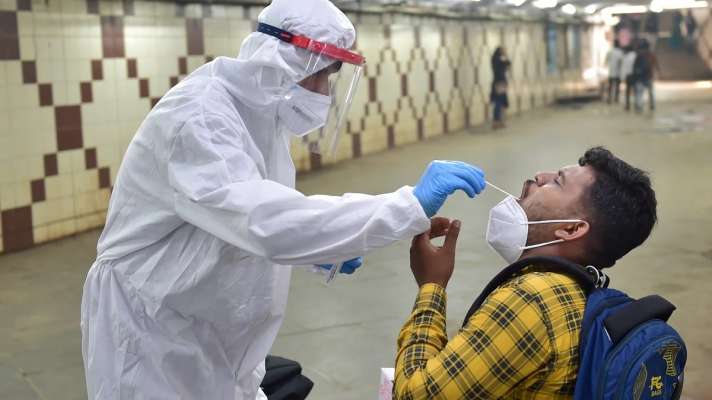
The R-value has increased after a steady decline in cases in the first half of August in the country.
Researchers say the R-value, which shows how fast the coronavirus pandemic is spreading, has risen sharply to near 1.2 over the past fortnight, mainly driven by cases in states like Kerala and Maharashtra.
According to researchers from the Institute of Mathematical Sciences, Chennai, the R-value calculated between August 24-29 was 1.17, while between August 14-17 it was 0.89.
The R-value has increased after a steady decline in cases in the first half of August in the country.
“Till that date (August 30), the situation was looking very bad. India’s R-value was close to 1.2. Not only is it a multiple, it is much higher than the last time there was a fear of a third wave (it was 1.03 at the time).
Sitabhara Sinha, who is leading the team of researchers, said, “This is driven by several states whose R-values have exceeded 1 in the last few days of August – notably Kerala and Maharashtra, but also Mizoram and Jammu and Kashmir. Too.” Institute of Mathematical Sciences, Chennai told PTI.
Kerala’s R-value was 1.33, which is the highest number of active cases in the country. Similarly, Mizoram had an R-value of 1.36, Jammu and Kashmir (1.25), Maharashtra (1.06) and Andhra Pradesh (1.09).
The reproduction number or R refers to how many people an infected person infects on average. In other words, it describes how efficiently a virus is spreading.
A small R indicates that the disease is on the decline. Conversely, if R is greater than 1, the number of people infected is increasing in each round – this is called the epidemic phase.
After a devastating second wave that saw hospitals and health infrastructure overwhelmed by patients infected with the SARS-CoV2 coronavirus, the R-value began to decline.
Read also | Third wave will be over: SC on delay in framing guidelines for Kovid death certificates
During the period March-May, thousands of people died due to infection while lakhs were infected. When the second wave swept the country between March and May, the R-value was 1.37 (between March 9 and April 21).
From May 15 to June 26, the R-value stood at 0.78. However, it gradually began to rise – it was 0.88 from June 20 to July 7, 0.95 from July 3-22, 0.96 from July 24-27.
It broke the value of 1.03 for the first time since the second wave during July 27-31. However, since then it has started to decline gradually. The R-value was 0.92 from 6–9 August and increased to 0.99 between 12–14 August. But between 14-17 August it fell to 0.89.
With 45,352 people testing positive for coronavirus, the total number of COVID-19 cases in India rose to 3,29,03,289, while active cases increased for the third consecutive day, according to data updated by the Union Health Ministry on Friday. was recorded.
“Active cases rose to 3,99,778, comprising 1.22 per cent of the total infections, while the national COVID-19 recovery rate has been recorded at 97.45 per cent,” the ministry said.
The active COVID-19 caseload has registered an increase of 10,195 cases in a 24-hour period. A total of 67.09 crore vaccine doses have been given so far under the nationwide vaccination campaign.
India’s COVID-19 tally had crossed the 20 lakh mark on August 7, 2020, 30 lakh on 23 August, 40 lakh on 5 September and 50 lakh on 16 September. It had crossed 60 lakhs on 28 September, 70 lakhs on October. 11, 80 lakh on 29 October, 90 lakh on 20 November and crossed the one crore mark on 19 December.
India crossed the grim milestone of 20 million on 4 May and 30 million on 23 June this year.
Read also | Country’s economy booming after second COVID-19 wave, this is what we read: Supreme Court
.